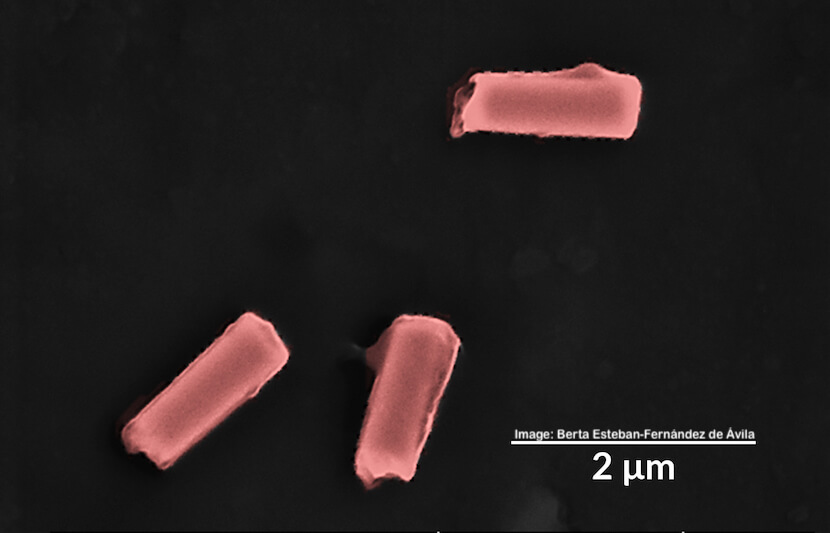Engineers at the University of California San Diego have developed microscopic robots that can swim through blood and remove harmful bacteria and toxins.
These nanorobots are about 25 times smaller than the width of a human hair, and could lead to an efficient and safe way to decontaminate biological fluids in the body.
The research was led by Joseph Wang and Liangfang Zhang, professors in the Department of NanoEngineering at the UC San Diego Jacobs School of Engineering.
The study is published online in Science Robotics.
How it works
The tiny robots are powered by ultrasound, and are built by coating gold nanowires with a fusion of platelet and red blood cell membranes.
While the platelets function to bind and target different forms of bacteria, red blood cells absorb and neutralize toxins produced by bacteria.
“Combining platelet and red blood cell membranes into each nanorobot coating is synergistic—platelets target bacteria, while red blood cells target and neutralize the toxins those bacteria produce,” Berta Esteban-Fernández de Ávila, a postdoctoral scholar in Wang’s research group, said in a statement.
To build the robots, the researchers first separate entire membranes from platelets and red blood cells, and then apply high frequency sound waves to fuse them together.
Since the membranes are taken from actual cells, they contain all of their original cell surface protein functions and can be coated onto gold nanowires using surface chemistry.
This coating protects the nanorobots from biofouling, a process that occurs when proteins collect on the surface of foreign objects and prevent them from functioning normally.
“The idea is to create multifunctional nanorobots that can perform as many different tasks at once,” Esteban-Fernández de Ávila said in a statement.
Testing the nanorobots
The gold coating allows the nanorobots to respond to ultrasound, giving the machines the ability to swim around efficiently and mix with their targets.
So far, the researchers have tested the nanorobots on blood samples contaminated with MRSA, an antibiotic-resistant bacterial strain of Staphylococcus aureus.
The nanorobots can travel up to 35 micrometers per second when powered by ultrasound, and after five minutes, the treated blood samples had three time less bacteria and toxins than untreated samples.
“This is a proof-of-concept platform for diverse therapeutic and biodetoxification applications,” Wang said in a statement.
Future applications
Though the work so far has only be tested for the treatment of MRSA, the researchers hope to be able to detoxify biological fluids more generally.
“Platelets can bind both gram positive and negative bacteria so this membrane coating can serve to treat multiple infections,” said Esteban-Fernández de Ávila.
Next, the researchers plan to test the nanorobots in live animals, and are working to make the coating out of biodegradable materials instead of gold.
“Using a hybrid coating combining the properties of red blood cells and platelets, we can create multifunctional, all-in-one nanorobots that are capable of both toxin and pathogen removal for efficient detoxification and decontamination for defense and biomedical applications,” said Wang.



